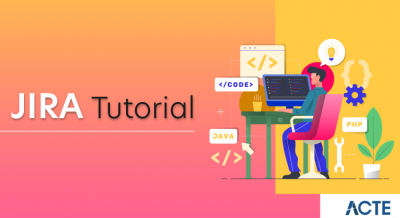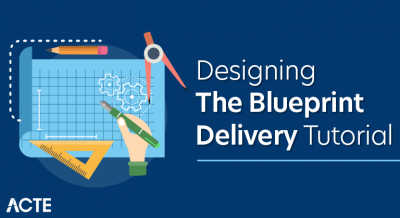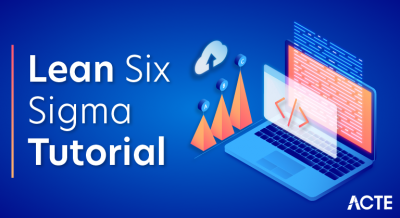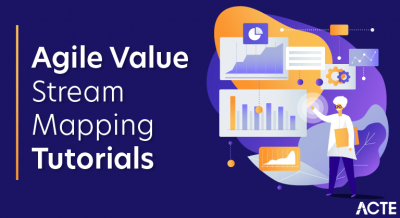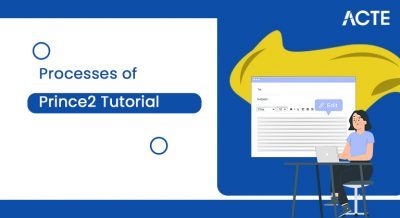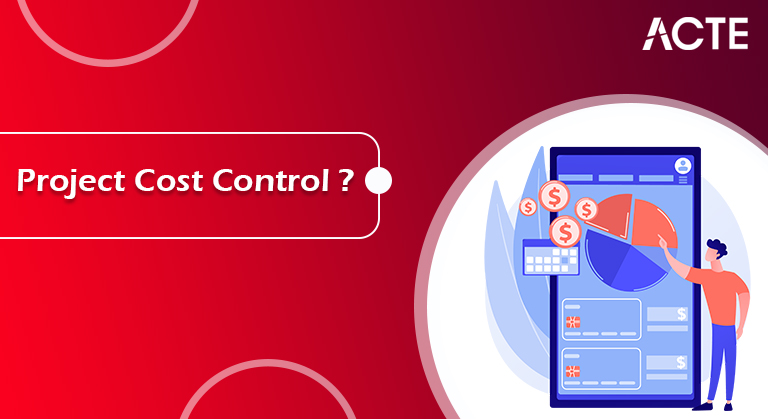
- Introduction
- What Is Cost Control?
- What is Project Cost Management?
- Why is Project Cost Management Important?
- Project Cost Control
- Controlling Costs on a Project
- Earned Value Management
- Forecasting
- Features of Cost control
- The Four Steps in Project Cost Management
- Project Cost Software
- Advantage of utilizing project cost management software
- Cost Management and Enterprise Project Performance
- The Process of Cost Control
- Areas of Cost Control
- Key contemplations for compelling undertaking cost administration and control
- The Additional Steps for Project Cost Control
- Advantage of Cost Control
- Disadvantage of cost control
- Pre-Requisites
- Conclusion
- It follows through on the necessities and degree
- Its execution quality is of an elevated expectation
- It’s finished inside plan and
- It’s finished inside the financial plan.
- Set clear assumptions with partners
- Control project requirements running amok because of transparencies laid out with the client
- Track progress and react with remedial activity at a speedy speed
- Keep up with an anticipated edge, increment ROI, and try not to lose cash on the undertaking
- Create information to benchmark for future ventures and track long haul cost patterns
- Plan Cost Management – Developing in general rules for cost administration for the venture
- Gauge costs – Estimating the aggregate sum of cash that will be expected to effectively finish all the venture work
- Decide spending plan – Developing an expense benchmark by collecting the expenses of individual exercises which should be spent at various places in the undertaking plan
- Control cost – Regularly observing the expense execution, estimating cost changes and choosing a proper remedial activity, and making a gauge of any modified quotes.
- One more technique for controlling venture costs is determining, which is the method involved with utilizing information on the current task status to anticipate future undertaking execution. Once more, you first need to have the financial plan arranged in a period staged way, although it may not be a complete asset-stacked timetable.
- The conjecture will then, at that point, be genuinely easy to compute: take your Actual Cost of Work Performed (ACWP), the real expense to date, and add it to the planned assessed cost of the leftover work, known as the Estimate to Completion (ETC). The subsequent worth (ACWP + ETC) is the Estimate at Completion (EAC).
- Asset arranging is the method involved with recognizing the assets expected to execute a venture and take it to the end. Instances of assets are individuals (like workers and project workers) and gear (like framework, enormous development vehicles, and other specific hardware in restricted stock).
- Asset arranging is done toward the start of a task before any real work starts.
- To get everything rolling, project directors first need to have the work-breakdown structure (WBS) prepared. They need to check out each subtask in the WBS and ask what number of individuals, with what sort of abilities are expected to wrap up this job, and what kind of gear or material is expected to complete this responsibility?
- By taking on this task-level methodology, it becomes feasible for project supervisors to concoct an exact and finish stock, all things considered, which is then taken care of as a contribution to the following stage of assessing costs.
- Asset prerequisites (yield from the past advance)
- Cost of every asset (e.g., staffing cost each hour, merchant recruiting costs, server acquirement costs, material rates per unit, and so on)
- Length that every asset is required
- Rundown of suppositions
- Possible dangers
- Past undertaking expenses and industry benchmarks, if any
- Knowledge into the organization’s monetary wellbeing and detailing structures
- Cost planning can be seen as a feature of assessment or similar to possessing a separate cycle. Planning is the most common way of distributing expenses for a specific lump of the undertaking, like individual errands or modules, for a particular time frame period. Spending plans incorporate possibility holds assigned to oversee surprising expenses.
- For instance, suppose the complete expenses assessed for a venture that runs more than three years is $2 million. Be that as it may, since the spending plan portion is a component of time, the undertaking chief chooses to think about only the initial two quarters until further notice. They recognize the work things to be finished and assign a financial plan of, say, $35,000 for this time-frame, and these work things. The venture administrator utilizes the WBS and a portion of the assessment techniques talked about in the past segment to show up at this number.
- Planning makes an expense standard against which we can proceed to gauge and assess the venture cost execution. Notwithstanding the spending plan, the complete assessed cost would stay a theoretical figure, and it would be hard to gauge halfway. Assessment of undertaking execution offers a chance to survey how much spending plan should be delivered for future periods of the venture.
- One more motivation to solidify financial plans is that associations frequently depend on expected future incomes for their subsidizing. During the underlying stages, the venture chief has a restricted monetary pool and needs to set targets likewise. It’s like structure the establishment and one story of the house in the underlying few months and later finishing the remainder of the undertaking, as you save more.
- Cost control is the method involved with estimating cost fluctuations from the standard and making a suitable move, for example, expanding the spending plan dispensed or lessening the extent of work, to address that hole. Cost control is a consistent cycle done all through the task lifecycle. The accentuation here is as much on opportune and clear detailing as estimating.
- Alongside the expense benchmark, the expense of the executive’s plan is a fundamental contribution to cost control. This arrangement contains subtleties, for example, how project execution will be estimated, what is the limit for deviations, how activities will be treated the edge is penetrated, and the rundown of individuals and jobs who have the leader position to simply decide.
- Acquired worth administration (EVM) is one of the most famous ways to deal with estimating cost execution. How about we take a model.
- Toward the finish of seven days, you measure the advancement of assignment X and see that as it’s 25% finished. Presently, how would you survey assuming you are on target to meet the undertaking spending plan?
- Initially, an undertaking supervisor computes the arranged incentive for this errand (at the arranging stage). Suppose, Task X has a spending plan of $4000 and is relied upon to be half-finished continuously.
- Mechanization of unwieldy quantitative investigation during assessment and estimation keeps away from manual mistakes
- Mix of information across arranging, assessment, planning, and control empowers constant checking and speedy, proactive reactions, rather than one-off intercessions
- Independent direction is made simpler as cost programming assesses substitute arrangements utilizing situation determining and imagining a scenario in which investigation
- Clear and simple announcing as dashboards and other rich UIs
- The intricacy of multicurrency the board in projects across various topographical areas is improved with project cost programming
- Many undertaking cost arrangements permit outsider combinations, so information can be pooled and examined
- Benchmarking and normalization are conceivable with the accessibility of execution information across different activities
- Control of work cost
- Material expense might be controlled
- Overhead might be controlled
- Movement Cost Estimates: It is the most common way of getting to the potential expenses for various exercises engaged with a specific task the executives procedure. It additionally includes controlling the expenses so a task can be finished inside the assessed financial plan. During movement cost assessment, changes to the exercises might emerge which can influence the quote. To determine this issue, having an expense board plan is essential. Without this, it is hard for activities to start.
- Basics of Estimates: It is a significant device in a project for the executives. It incorporates project directors and assessors to work out the complete expense required for the whole undertaking. To put it plainly, it is a strategy for reporting different significant parts of the undertaking quote to kill the expense hazard of the venture. It should be an unmistakable report so those associated with the project the board can have the option to comprehend. It makes it more straightforward for those in the project the board to decide the financing choice, cost, cost hazard, amazing open doors, and numerous others.
- Scope Baseline: It is a piece of the task the executives plan and goes about as the reference point through the whole venture. It has a few parts like the undertaking degree report, the WBS word reference, and the actual WBS. The task scope archive clarifies the item scope portrayals, project expectations, and acknowledgment standards. WBS is the itemized depiction of the arrangement of exercises that are expected in the task.
- Project Scheduling: Project booking is a cycle to impart how undertakings should be treated which assets will be assigned. A task plan is an archive gathering all the significant work expected to convey the undertaking on schedule. Project timetable can be utilized to decide the expense financial plan over the long haul. For a predefined schedule period, you can consolidate the movement costs which is intended to decide the time-staged financial plan.
- Asset Calendars: Asset schedules will tell you which and when assets are doled out to the task. Involving each rate for every asset and joining them with the undertaking plan, you can decide asset costs over the long run. It alludes to the particular schedule that rundowns every one of the functioning days as well as every one of the special times of year that the venture supervisory group and the task chief need to use. With the goal that they can have the option to figure out which explicit asset is being utilized and on which dates they might be idle.
- Precise expense assessment – It is critical to concoct an exact expense assessment. Exact expense assessment will require nitty-gritty and precise asset assessment for every movement in the undertaking degree. Knowing the expense of every asset from believed source is likewise similarly significant. Cost for labor supply, materials, and machines should be figured while making cost assessments.
- Setting up a financing prerequisite arrangement – Integrating the quotes and the venture plan, the group needs to precisely set up the aggregate consumption plan which will empower the administration to comprehend the subsidizing necessities at various crossroads of the undertaking with the goal that they can sort out for reserves in like manner.
- Project changes the executives – Any sort of progress demands should be dealt with in a precise and controlled way. Cost impacts because any new change demand should properly be added to the expense baselines with required authorizations.
- Observing venture timetable – In request to finish the task inside cost, it could be essential to guarantee there are no postponements in finishing the undertaking work. Any deferral may build the task cost.
- Checking cost use – Regularly it will likewise be important to screen the genuine consumption and how much work is cultivated. Any sort of change here can prompt issues concerning project costs.
- Utilizing Earned Value Analysis – Earned Value Analysis is an exceptionally well-known strategy for checking and controlling expenses. Cost and timetable differences can be determined consistently, and suitable remedial activity and gauge can be made given the fluctuation discoveries.
- Achieving the normal profit from capital utilized by boosting or advancing benefit.
- Increase in efficiency of the accessible assets.
- Reasonable cost for the clients.
- Continued business and open positions for the laborers.
- Economic utilization of restricted assets of creation.
- Increased credit value.
- Prosperity and financial steadiness of the business.
- Diminishes adaptability and interaction improvement in an organization.
- Limitation on advancement.
- Prerequisite of capable staff to set principles.
- Assumptions and Frequent Review. Before a venture is begun, all included should have a reasonable and explicit meaning of the undertaking’s necessities, objectives, and prerequisites.
- Making Accurate Budgets.
- Variable Evaluation and Action.
- Legitimate Information Use and Communication.
Introduction :-
Practically every one of the activities should be directed right all through to get the required and anticipated result toward the finish of the task. It is the group that is liable for the task and above all the venture administrator that should have the option to complete powerful controlling of the expenses. There are, nonetheless, a few procedures that can be utilized for this reason.
Notwithstanding the undertaking objectives that the venture director needs to manage, the control of different expenses is additionally a vital errand for any task. Project the board would not be powerful by any means on the off chance that an undertaking director flops in this regard, as it would decide if your association would create a gain or misfortune.
What Is Cost Control?
Cost control is the act of distinguishing and diminishing operational expenses to build benefits, and it begins with the planning system. An entrepreneur contrasts the organization’s genuine monetary outcomes and the planned assumptions, and if real expenses are higher than arranged, the board has the data it needs to make a move.
Cost Control targets accomplishing the pre-decided expense targets and closures when the objectives are accomplished. It involves target setting, learning the genuine exhibition and contrasting it and the objectives, researching the differences, and going to preventive lengths.
What is Project Cost Management?
Project cost administration is the most common way of assessing, planning, and controlling expenses all through the task life cycle, with the target of keeping consumptions inside the endorsed spending plan.
For an undertaking to be called effective, it’s fundamental that
Henceforth, project cost administration is one of the vital mainstays of venture the executives and is important no matter what the area, be it fabricating, retail, innovation, development, etc. It assists with making a monetary pattern against which project supervisors would benchmark the current status of their task be able to costs and realign the bearing if necessary.

Why is Project Cost Management Important?
The significance of cost administration is straightforward. To take a basic, genuine model, assuming you choose to assemble a house, the principal thing to do is set the spending plan. At the point when you know the amount to spend on the undertaking, the following stage is to isolate the undeniable level financial plan into costs for sub-assignments and more modest details.
The spending plan will decide basic choice focuses, for example, which planner to enlist a top of the line one who will develop and convey the undertaking start to finish, or somebody who can assist with a couple of components and have the option to work for a more modest financial plan? What number of stories should the house have? What nature of materials ought to be utilized?
Without a predefined financial plan, in addition to the fact that it is hard to respond to these inquiries, however, it becomes difficult to survey whether you are advancing in the correct course once the task is in progress. In huge associations, the size of this issue is additionally amplified because of the simultaneous running of numerous tasks, change in beginning suspicions, and the option of startling expenses. That is the place where cost administration can help.
By carrying out proficient expense the executives rehearse, project directors can:
Project Cost Control :-
Each venture should be finished in a settled-upon measure of cash. Finishing the undertaking inside the financial plan is perhaps the main venture achievement measure. Cash is the main asset and this should be spent carefully in a venture.
Project cost administration will become one of the basic information areas of undertaking the board. Project cost administration will zero in on guaranteeing project costs are assessed in a most precise way, project planning is finished by choosing the sum to be invested by various places in the energy of the undertaking plan and constantly observing and controlling expense.
Consequently, powerful task cost control will initially require exact expense assessment and planning. According to the PMBOK guide, the following are the 4 cycles for project cost administration:
Controlling Costs on a Project :-
Have you at any point arranged a home improvement project, such as adding a porch or finishing a room, and the expenses appeared to increment consistently? Try not to feel terrible; it isn’t so uncommon. The uplifting news is there are some expense control techniques you can utilize.
Bramble first, there is a basic standard of undertaking the executives that you want to get a handle on. This rule, called the triple limitation, clarifies the connection between cost, timetable, and extension (fresher models add quality too, especially for exceptionally specialized activities). The triple requirement shows that you can’t oversee cost freely, yet rather should oversee cost as it connects with the timetable and extent of the venture.
All in all, how would you do that? First, you foster a timetable for the extent of the task. Then, at that point, you relate the undertaking expenses for the timetable by fostering a period staged financial plan, which designates the spending plan to the particular work planned. Planning expenses for the timetable permits you to relate expenses to work performed. For instance, on your deck project, you’ve planned two days for the worker for hire to even out and smaller the ground. Presently you apportion the assessed cost for that work to that planned movement. At the point when the worker for hire is done, you can then relate the real expenses for the work performed for that piece of the venture.
There are a few expense control frameworks or approaches that can be utilized on undertakings like Earned Value Management, estimating, and a To-Complete Performance Index. The choice of which strategy to use on a specific venture will be founded on the undertaking intricacy and the prerequisites of the task client or support. How about we explore these methodologies.
Earned Value Management :-
The best venture the executive’s framework to use for cost control is Earned Value Management (EVM), which distinguishes project differences between the worth of work arranged and the worth of work performed. For EVM to work, your venture should have an asset-stacked timetable, meaning the task should be time-staged with the booked work. An asset stacked timetable permits you to compute the worth of work booked contrasted with the planned expense of work performed. Simultaneously, you can involve your bookkeeping framework to get an incentive for the real expense of work performed.
When you have values for the work booked, the planned expense of work performed, and the real expenses, you can compute a Schedule Performance Index (SPI), which measures and looks at the genuine advancement to the arranged advancement, and a Cost Performance Index (CPI), which measures and thinks about the real expenses for the arranged expenses.
Translation of these two lists is clear and simple: a positive worth is great and a negative worth is awful. So for CPI, a positive worth says that you underspent for the work you’ve finished, while a negative worth says you have overspent your financial plan for the work performed.
Involving the EVM for your porch project, it would be not difficult to check whether you have burned through 75% of your spending plan, yet have just finished half of the genuine work. This tells you that to complete the financial plan, you want to make a move to lessen the expense of the leftover half of the work
Forecasting :-
Features of Cost control :-
The cost control process includes setting targets and norms, finding out the real execution, contrasting the genuine execution and standard, researching the fluctuations, and making a restorative move.
1. It targets accomplishing the norm.
2. It is a preventive capacity. In cost control, costs are improved before they are caused.
3. It is for the most part material to things that have minimum expectations.
4. It contains rules and mandates for the executives, for example, how to do a thing.
The Four Steps in Project Cost Management :-
While cost administration is seen as a constant cycle, it assists with parting the capacity into four stages: asset arranging, assessment, planning, and control. They are generally consecutive, however, it’s conceivable that a few asset changes happen halfway through the undertaking, constraining the financial plans to be changed. Or on the other hand, the changes seen during the control cycle can call for gauge updates.
Allow us to check out every one of these four stages exhaustively.
1. Project Resource Planning:
2. Cost Estimation:
Cost assessment is the most common way of measuring the expenses related to every one of the assets expected to execute the venture. To perform cost estimations, we want the accompanying data:
3. Cost Budgeting:
4. Cost Control:
Project Cost Software :-
Cost administration, like different parts of undertaking the board, gets complicated with numerous factors in play. The actual cycle is intricate, requiring meticulousness alongside a thorough methodology. The utilization of venture the executives programming can work on this interaction impressively.
Advantage of utilizing project cost management software :-
Cost Management and Enterprise Project Performance :-
In the 2018 PMI Pulse of the Profession Report, 41% of respondents said that their ventures are of high intricacy. It’s nothing unexpected then that 40% of the study members consider “putting resources into innovation to all the more likely empower project achievement” as their first concern.
Cost administration is intently attached to the capacity of an association to prevail in current as well as future undertakings. Putting resources into solid expense the board programming can bring about immense investment funds. A decent answer for cost administration won’t regard it as a siloed work yet influence it as basic to project and portfolio execution, and connect information across projects.
The Process of Cost Control :-
1. Planning: Initially an arrangement or set of targets is laid out as spending plans and principles.
2. Communication: The subsequent stage is to convey the arrangement to those whose obligation is to execute the arrangement.
3. Motivation: Motivation is characterized as the interaction that starts, directs, and keeps up with objective situated practices.
4. Appraisal and Reporting: correlation must be made with the foreordained targets and real execution. Lacks are noted and conversation is begun to beat inadequacies.
5. Decision-production: Finally, restorative activities and therapeutic measures are taken or the arrangement of targets is overhauled, contingent on the’s how an organization might interpret the issue.
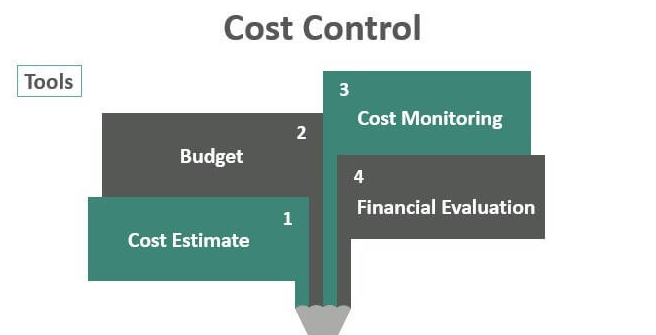
Areas of Cost Control :-
These significant expense control regions are given underneath:
Those elements are depicted beneath:
Key contemplations for compelling undertaking cost administration and control :-
The Additional Steps for Project Cost Control :-
It is fitting to continually audit the spending plan as well as the patterns and other monetary data. Giving reports on project financials at customary spans will likewise assist with monitoring the advancement of the task.
This will guarantee that overspending doesn’t happen, as you would not have any desire to discover when it is past the point of no return. The previous the issue is found, the more effectively and rapidly it very well may be helped.
All records ought to likewise be given at normal spans to examiners, who might likewise have the option to call attention to you any possible expense chances.
Advantage of Cost Control :-
The benefits of cost control are essential as follows:
Disadvantage of cost control :-
These are burdens of cost control:
Pre-Requisites :-
Conclusion :-
Essentially concocting a task spending plan isn’t sufficient during your undertaking arranging meetings. You and your group would need to watch out for whether the expenses stay near the figures in the underlying spending plan. You want to constantly remember the dangers that accompany cost acceleration and have to forestall this admirably well. For this, utilization of the above methods clarified and continually screen the undertaking costs.


